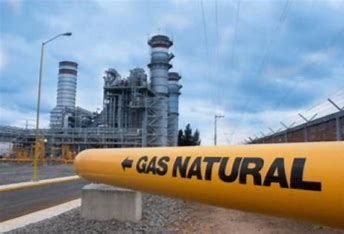Rio de Janeiro state accounts for 70% of Brazil’s gas production; only 24% of it reaches consumer market
02/01/2024

There is shortage of natural gas in Brazil to meet growing demand. That is the conclusion of the “Prospects for Gas in Rio,” a study by the Rio de Janeiro Federation of Industries (Firjan) to be released this Tuesday (30). “There is a consumer market interested in a greater supply of gas in the country; what is missing in order to meet such potential is greater availability on a competitive basis of price and accessibility,” the study states.
According to Firjan’s survey, the state of Rio de Janeiro accounts for 70% of the Brazilian gas production, but only 24% of it is made available to the consumer market. Among the reasons for that situation, according to Firjan, is the high cost of production, due to the location of producing areas and the existence of contaminants. The volume of gas reinjected by oil companies into wells to streamline production has also increased, the report says.
Natural gas is seen as a key element for energy transition, according to the study. Therefore, companies’ demand for the product has increased, following the trend of seeking a position in a “greener” market. “Gas is a transition energy source given its lower greenhouse elements emissions,” Luiz Césio Caetano, vice-president of Firjan, notes. “We need to make natural gas more competitive.”
According to Firjan, the fact that natural gas is mostly associated with oil production should be regarded as a differentiator in the global market. Brazilian oil, especially that extracted from the pre-salt layer, is one of the most competitive in the world given its low operating costs and low greenhouse gas emissions. “Our production has proven to be resilient to adverse scenarios in recent years, including the effects of the COVID-19 pandemic and the war in Eastern Europe, which had strong impact on the global energy scenario, especially on oil and natural gas.”
“Strategies to streamline the production process, such as adapting existing and idle infrastructure in the Santos basin, must be considered and evaluated as alternatives to reducing investment in natural gas.”
Rota 3 gas pipeline intended to connect pre-salt fields in the Santos Basin to the Gaslub hub for 355 kilometers is expected to enter into operation in the second half of this year. It is expected to ease pressure on supply, according to Mr. Caetano. The pipeline’s capacity is approximately 18 million cubic meters of gas per day. Another project also awaited by the industry in the longer term is the BM-C-33. Scheduled for 2028, the project includes an area operated by Equinor in partnership with Repsol Sinopec Brasil and Petrobras and is expected to flow 16 million cubic meters of gas per day.
Still, Prio, which participates in the Firjan study, argues that the two projects, Rota 3 and BM-C-33, will not be enough. According to the independent oil company, improvements to the country’s infrastructure are required to transport production: “If that [infrastructure construction] is not done, the operation growth will be limited. Rota 3 (2024) and BM-C-33 (2028) are under construction to expand capacity, but they will probably not be enough to supply the entire sector.”
*Por Kariny Leal — Rio de Janeiro
Source: Valor International
